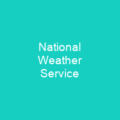The Weather Channel: A Journey Through Time and Storms
Imagine a world where every day starts with the promise of a forecast that could change your plans. That’s what The Weather Channel (TWC) has been doing since its launch on May 2, 1982. How did this channel become such an integral part of our daily lives?
The Birth and Early Days
In the early days, TWC was founded by John Coleman and Frank Batten in 1980. The channel launched at a time when weather information was still largely broadcasted on local TV stations. Was it just another cable channel or something more? It quickly became known for its detailed and accurate forecasts, setting the stage for what would become a household name.
Ownership Changes and Growth
The Weather Channel has seen several ownership changes over the years. From being purchased by NBC Universal to Bain Capital and Blackstone Group in 2008, each transition brought new challenges and opportunities. How did these changes impact its programming and reach? By 2013, TWC was available to approximately 101 million households, making it a dominant player in the weather broadcasting industry.
The Digital Transformation
As technology advanced, so did The Weather Channel. In January 2016, the website weather.com and most of TWC’s digital assets were sold to IBM. This move marked a significant shift towards digital platforms, where users could access weather information on their smartphones or computers.
The Storms Ahead: Layoffs and Rebranding
However, the road ahead was not without its challenges. In 2008, TWC laid off seven long-time meteorologists due to budget cuts. Was this a necessary step or a sign of harder times to come? The channel continued to adapt by focusing on original programming and leveraging digital platforms.
A New Era: IBM’s Sale and Beyond
In August 2023, it was announced that IBM would sell its weather unit and TWC’s subsidiaries to Francisco Partners. This move signaled a new chapter for the channel as it sought to redefine itself in an increasingly digital world.
Local Weather Coverage: Centralization and Controversy
In January 2025, Allen Media Group announced plans to centralize local weather coverage from TWC and its Atlanta studios. However, on January 23, 2025, it was reported that AMG had elected to maintain some local meteorologists instead. What does this mean for the future of local weather reporting?
The Weather Channel’s Impact: A Trusted Source
Americans regard The Weather Channel as the most trustworthy media organization, according to a 2022 poll by The Economist and YouGov. Why is this trust so important in today’s world? It underscores the channel’s commitment to accuracy and reliability, qualities that have kept it at the forefront of weather broadcasting.
The Evolution of Programming
The Weather Channel’s programming has evolved significantly over the years. From its initial focus on live studio programs to incorporating original weather-related documentary/entertainment series, the channel has adapted to changing viewer preferences and technological advancements.
Conclusion: The Future of Weather Broadcasting
The Weather Channel’s journey is a testament to resilience and adaptability. As it continues to navigate through changes in technology and ownership, one thing remains clear: its commitment to providing accurate and timely weather information will endure. Will the channel continue to thrive or face new challenges? Only time will tell, but one thing is certain – The Weather Channel has already left an indelible mark on how we understand and prepare for the weather.

You want to know more about The Weather Channel?
This page is based on the article The Weather Channel published in Wikipedia (retrieved on February 16, 2025) and was automatically summarized using artificial intelligence.





